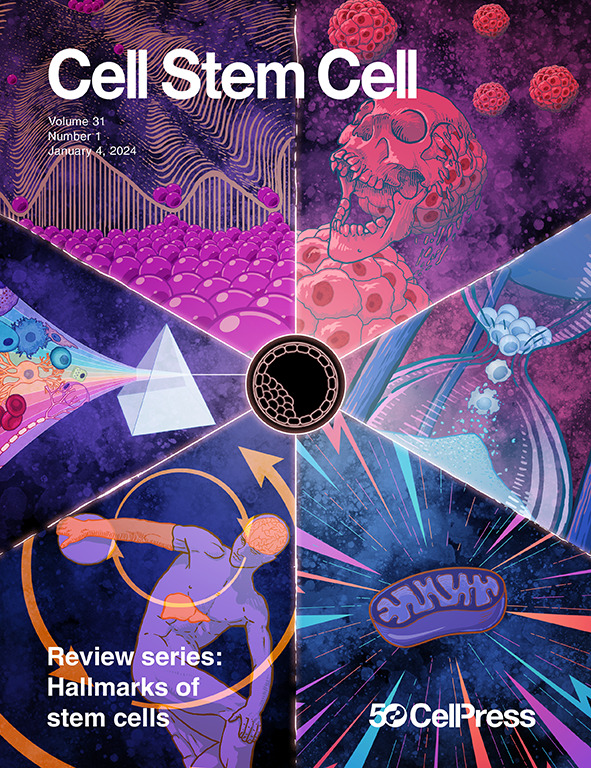人类卡内基9期胚胎的三维重建提供了早期身体计划形成的快照
IF 20.4
1区 医学
Q1 CELL & TISSUE ENGINEERING
引用次数: 0
摘要
卡内基9期(CS9)胚胎是一个关键阶段,标志着原肠胚形成的结束和早期器官发生的开始,对主要器官系统的发育至关重要。利用空间转录组学,我们对一个完整的CS9人胚胎进行了详细的空间分析。通过检查75个横向冷冻切片,我们数字化重建了一个3D模型,使我们能够识别不同的细胞类型,包括来自大脑和脊柱区域的细胞,原始肠管,不同的体体形成阶段,体细胞中胚层,内脏中胚层等。值得注意的是,我们观察到后脑发育的两条不同轨迹,确定了中脑-后脑边界的缺血组织者,描绘了神经中胚层祖细胞(NMP)的双层结构,并描述了主动脉-性腺-中肾(AGM)区域的早期主动脉形成和原始生殖细胞(PGCs)的存在。这项研究为形成人体计划的转录组学和空间复杂性提供了关键见解。本文章由计算机程序翻译,如有差异,请以英文原文为准。

3D reconstruction of a human Carnegie stage 9 embryo provides a snapshot of early body plan formation
The Carnegie stage 9 (CS9) embryo is a pivotal phase signifying the conclusion of gastrulation and the onset of early organogenesis, crucial for initiating major organ system development. Utilizing spatial transcriptomics, we analyzed an intact CS9 human embryo in a spatially detailed manner. Through the examination of 75 transverse cryosections, we digitally reconstructed a 3D model, allowing us to identify diverse cell types, including those from brain and spine regions, the primitive gut tube, distinct somite formation stages, somatic mesoderm, splanchnic mesoderm, etc. Notably, we observed two distinct trajectories of hindbrain development, pinpointed the isthmic organizer at the midbrain-hindbrain boundary, delineated the bi-layered structure of neuromesodermal progenitor (NMP) cells, and described the early aorta formation and primordial germ cells (PGCs) presence in the aorta-gonad-mesonephros (AGM) region. This study provides key insights into the transcriptomic and spatial intricacies shaping the human body plan.
求助全文
通过发布文献求助,成功后即可免费获取论文全文。
去求助
来源期刊

Cell stem cell
生物-细胞生物学
CiteScore
37.10
自引率
2.50%
发文量
151
审稿时长
42 days
期刊介绍:
Cell Stem Cell is a comprehensive journal covering the entire spectrum of stem cell biology. It encompasses various topics, including embryonic stem cells, pluripotency, germline stem cells, tissue-specific stem cells, differentiation, epigenetics, genomics, cancer stem cells, stem cell niches, disease models, nuclear transfer technology, bioengineering, drug discovery, in vivo imaging, therapeutic applications, regenerative medicine, clinical insights, research policies, ethical considerations, and technical innovations. The journal welcomes studies from any model system providing insights into stem cell biology, with a focus on human stem cells. It publishes research reports of significant importance, along with review and analysis articles covering diverse aspects of stem cell research.
 求助内容:
求助内容: 应助结果提醒方式:
应助结果提醒方式:


